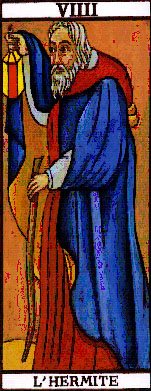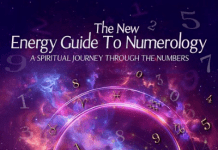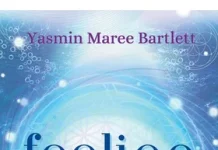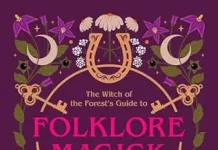  It is blasphemy! Imagine someone having the gall to suggest that the Tarot, which was referred to as the ‘Devil’s Book’ in the Middle Ages, is presenting the same gospel as  Jesus’ New Testament. For this to happen there would have to be two significant paradigm shifts. One shift would require a new understanding of Jesus’ New Testament, and the other, a   new understanding of the Tarot. And this is the seat of the problem. Christianity, the religion that emerged in the century following Jesus’ death, monopolised his teachings and declared that its  interpretation of Jesus’ teachings, was in fact, the only valid interpretation. A similar fate unfolded with the Tarot. A set of images that were created during the 14th century as a sacred map,  where trivialised a hundred years later into a card game and system of divination.
 It is blasphemy! Imagine someone having the gall to suggest that the Tarot, which was referred to as the ‘Devil’s Book’ in the Middle Ages, is presenting the same gospel as  Jesus’ New Testament. For this to happen there would have to be two significant paradigm shifts. One shift would require a new understanding of Jesus’ New Testament, and the other, a   new understanding of the Tarot. And this is the seat of the problem. Christianity, the religion that emerged in the century following Jesus’ death, monopolised his teachings and declared that its  interpretation of Jesus’ teachings, was in fact, the only valid interpretation. A similar fate unfolded with the Tarot. A set of images that were created during the 14th century as a sacred map,  where trivialised a hundred years later into a card game and system of divination.
Â
 What if the original gospel taught by Jesus had been radically distorted by a religion that declared itself to represent his doctrine? What if the Tarot was not a divining tool but a sacred map?  What if the Major Arcana of the Tarot was the primitive, pre-Christian teachings of Jesus recorded in picture form to preserve the integrity of his teachings, during a time when his gospel of  love had been distorted by power and greed? If these questions were plausible, then one could assume that the symbolism of the Major Arcana would reveal a dimension to Jesus’ teachings  that have been forgotten or ignored for hundreds of years.
Â
If this is in anyway conceivable, then its ramifications will be enormous. This would challenge the validity of Christianity, especially if the doctrine revealed by the Tarot is significantly different to the teachings currently represented by Christianity. This would put into question the position that Christianity represents Jesus’ authentic teachings. Would this make Christianity obsolete? It’s hard to imagine a world without Christianity. But there would have been many people anciently who thought that religions like Mithraism (second century B.C. to fourth century A.D.), and the Eleusinian rites of Demeter (13th century B.C. to fourth century A.D.), would never disappear. No wonder the Catholic Church of the Middle Ages declared the Tarot heretical and went to great lengths to exterminate the ‘heretics’ responsible for their creation.
Â
This radical proposal rests solely on the idea that the Major Arcana of the Tarot reveals a more primitive and original understanding to Jesus’ New Testament than what is contemporarily accepted by Christianity as the New Testament. The Major Arcana (the word arcana meaning ‘secret or mystery’) is made up of 22 picture cards, which originally appear to have been a stand-alone set of images. The earliest references to these images arose in Northern Italy, in the region of Milan, around the middle of the 14th century. This was during the time when Milan was under the control of the Visconti family. Taking control of Milan at the end of the 13th century, Otto Visconti was appointed as the archbishop, however, he became a self-declared heretic, which saw Milan, along with several other Northern Italian cities, being ‘excommunicated’ by the church. The void of religious instruction that came as a consequence of the Catholic Church’s actions was filled by the Cathari and Patarini heretics, who the church attempted to exterminate thorough the Albigensian Crusade and the Inquisition. It appears that Milan became a refuge for the fleeing heretics and their form of spirituality appealed to the Italian nobles, just as it had to the nobles of Southern France from where they were fleeing.
Â
It is thought that the inspiration for these sacred images, which later became known as the Major Arcana of the Tarot, may have come from these religious heretics. A set of images arose that later became known as the Marseille Tarot. It is widely accepted that the style of these images predate all other sets of Tarot cards, which are currently known to exist. These days, Tarot cards come in all forms and in most cases hold no resemblance to the primitive images of the Marseille Tarot. This rejection of the Marseille symbology was indicative of the shift which occurred in the 15th century, which saw the images that were originally designed to be a sacred map, become a tool for divination. It is worth noting that the declaration by the Church that the cards were the “Devil’s Books†appears to predate their use for divination. This would suggest that the Church’s banning of the images was a consequence of some other form of heresy.
 The Cathari, prior to being eliminated by the Catholic Church, lived in harmony with their Catholic neighbours in communities all throughout Southern Europe. One of the first cities to be ‘cleansed’ of these heretics, by the Albigensian Crusaders was the city of Béziers, in the region of Languedoc. Being warned by the crusaders that the city and its inhabitants were to be attacked, the Catholic inhabitants of Béziers were encouraged to leave. They refused, as they respected the Cathars. As history reveals, the crusaders went on to kill thousands of Catholics and Cathars alike. The Cathars where known as the ‘good people’ because they lived their lives based on the principles taught by Jesus in his Sermon on the Mount. According to Durant in his epic on medieval history, The Age of Faith, the only teachings of Jesus to which the Cathars were aligned was his Sermon on the Mount.
The Cathari, prior to being eliminated by the Catholic Church, lived in harmony with their Catholic neighbours in communities all throughout Southern Europe. One of the first cities to be ‘cleansed’ of these heretics, by the Albigensian Crusaders was the city of Béziers, in the region of Languedoc. Being warned by the crusaders that the city and its inhabitants were to be attacked, the Catholic inhabitants of Béziers were encouraged to leave. They refused, as they respected the Cathars. As history reveals, the crusaders went on to kill thousands of Catholics and Cathars alike. The Cathars where known as the ‘good people’ because they lived their lives based on the principles taught by Jesus in his Sermon on the Mount. According to Durant in his epic on medieval history, The Age of Faith, the only teachings of Jesus to which the Cathars were aligned was his Sermon on the Mount.
If the images of this sacred map were inspired by the Cathars, it would make sense that their pictorial message should reflect their beliefs, in particular the Sermon on the Mount and the Beatitudes. It would also be reasonable to expect that the images contain evidence that would be contemporary with the period of the Milanese Cathars. In this regard, there are several significant details. Close investigation of the Pope card (La Papa) reveals a two-tiered tiara. This type of papal tiara was first worn by Pope Innocent III (papacy 1198-1216), who commissioned the crusade against the Cathars, and was last worn by Boniface VIII (papacy 1294-1303). Even the style of the papal staff can be attributed to this era, since prior to the 14th century it took the shape of a crosier.
Card 14 is called The Hermit (Le Hermite), who represents the passage of time. In later packs this card was called Time (Il Tempo) and depicted the old man holding an hourglass as opposed to a lamp. An hourglass could not have been used in the earlier images since the first reference to time being measured by an hourglass did not appear until 1330, having only been invented in Northern Italy around that time.
The inclusion of a Popess card (La Papesse) is also significant. There was an attempt to appoint a Popess in Milan in the year 1300. This was while Matteo Visconti (the successor and nephew to Otto) was the Lord of Milan. The incumbent Popess, Maifreda, had vestments prepared for her and her cardinals, appointed in preparation for the auspicious occasion. When Pope Boniface VIII was alerted to the plan, he used the powers of the Inquisition to have her incarcerated and burnt at the stake, along with her cardinals. The unfortunate young nun was said to be a cousin to Matteo Visconti. There is no conclusive evidence that the Cathars had anything to do with Maifreda, however, given their beliefs that honoured the equality of women, one cannot help but wonder if they were behind this heretical appointment.
Â
The Wheel of Fortune card (La Roue de Fortune) reflects a phenomenon of the Middle Ages that saw the church develop an unprecedented interest in this design. One of the first panels to be laid in the floor of the Siena Cathedral was the Wheel of Fortune in 1372. The Carmina Burana was a medieval text (circa 12th – 14th century) that depicted the Wheel of Fortune as well as music with the concept of Fortune as the theme. The Chariot card (Le Chariot) represents the tradition of the Triumphal Entry of ancient Rome. Its significance could be reflected in the story of Castruccio Castracani who overcame the Florentine Guelphs in the same way Otto defeated the Milanese Guelphs 30 years earlier. Castruccio enacted the ancient tradition of the Triumphal Entry in 1326.
Â
All of these images lend support to the idea that the Major Arcana of the Marseille Tarot were created during the 14th century. It also would suggest that the creation of these images took place in the region of Northern Italy. However, what of its doctrinal relationship?
Â
The Cathars believed that this world was an illusion, in fact, they believed that a lesser deity was the God of this world. Their goal was to awaken from this world in order to enter the kingdom of Heaven, and believed that the Sermon on the Mount, in particular the Beatitudes, explained how that was possible. The images of the Major Arcana were designed to explain the whole process of transformation, but the part of the process which related to Jesus’ Beatitudes was depicted in cards 12 to 20. In his teaching of the Sermon on the Mount, Jesus explained to his audience (which was primarily Jewish) that what he was teaching them was not intended to do away with the old testament (the law or the prophets which included the temple rituals), but that he was there to make them more meaningful. He was challenging his audience to adopt rituals for a temple ‘not made with hands’. His new testament was a form of spiritual psychology, which he goes onto explain in detail in his sermon. This was such a new concept to his Jewish audience that the last verse in the scriptures relating to the Sermon on the Mount explains that the people were ‘astonished at his doctrine’.
Â
The core structure of his psychology was explained in the eight Beatitudes. These statements summarised the transformative process required to overcome the world of illusion in order to find the kingdom of Heaven. Cleverly, the Cathars created images that explained that process.
Â
| Beatitude | Tarot Card | Meaning |
| Blessed are the poor in spirit: for theirs is the kingdom of heaven. | The Hanged Man | This represents the humiliation and inactivity that comes with having been pruned. Here we experience loss of those things deemed important in this world. |
| Blessed are they that mourn: for they shall be comforted. | Death | Dying to our old behaviours and beliefs requires us to progress from grief to mourning. Here we experience release from old habits. |
| Blessed are the meek: for they shall inherit the earth | Temperance | Meekness is the state of being emotionally vulnerable. Here we confess the feelings and thoughts that no longer serve us. |
| Blessed are they which do hunger and thirst after righteousness: for they shall be filled. | The Devil | The only way to overcome the temptation to resort to our old patterns is to fill our lives with service for those less fortunate. That is righteousness. |
| Blessed are the merciful: for they shall receive mercy. | The Star | Here we pour the waters of mercy onto the world around us. This is the time when forgiveness becomes our only function. |
| Blessed are the pure in heart: for they shall see God. | The Moon | Purity in heart occurs when we devote our love to God. This sees our focus turn from needing love to constantly extending love. This is charity. |
| Blessed are the peacemakers: for they shall be called the children of God. | The Sun | As a peacemaker, duality is resolved. Perpetrator and victim are loved equally. This is when our consciousness is aligned with the Christ. |
| Blessed are they which are persecuted for righteousness’ sake: for theirs is the kingdom of heaven. | Judgement | Having adopted ‘Christ consciousness’ it is inevitable that we will be persecuted by the ego. Here we get to measure our consciousness.          |
Â
The Christian church was unable to align itself with this version of Jesus’ gospel because it required detachment from power (control) and wealth, the important things of this world. It necessitated righteousness, forgiveness, charity and peace as the only priorities. This version of Jesus’ gospel taught that in Christ consciousness there was “neither Jew nor Greek, there is neither bond nor free, there is neither male nor femaleâ€. This form of Jesus’ gospel has not been practiced in two thousand years, with the exception of the few who truly understood his primitive teachings. The Cathars were one group who honoured his primitive teachings. In an attempt to salvage these teachings, Jesus’ New Testament was transposed into a set of 22 images that would later be referred to as the Tarot. It is very possible that the Tarot was in fact Jesus’ New Testament.
Â
Russell Sturgess is the author of the book Metanoia: Renovating the House of Your Spirit from which this article is derived. Russell will be a keynote speaker and presenter at the Conscious Living Expo. He is the Director of Education for beAttitude, which presents the workshop series The Art of Change. Email him at russell@beattitude.com.au or see him at stand G2.
Â
Â









































